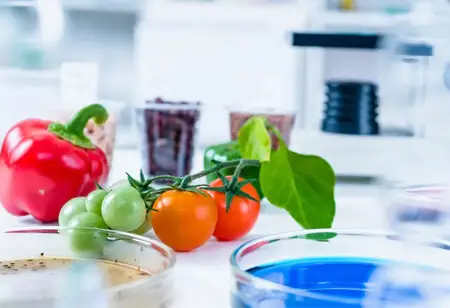Thank you for Subscribing to Food Business Review Weekly Brief
- Home
- Topics
- Alternative Proteins and Plant Based Food
- Beer and Wine
- Canned Beverages
- Coffee And Tea
- Food and Beverage Consulting
- Food and Beverage Financial Service
- Food And Beverages Marketing
- Food Distributors
- Food Ingredients
- Food Sustainability
- Plant Based Food and Beverages
- Seafood Suppliers
- Supplement Manufacturing
- Wine Investment
- News
- Vendor Viewpoint
- CXO Insights
- Conferences
- Newsletter
- CXO Awards
-
Technology is the key to the food delivery sector's success

By
Food Business Review | Wednesday, November 17, 2021
Stay ahead of the industry with exclusive feature stories on the top companies, expert insights and the latest news delivered straight to your inbox. Subscribe today.

From restaurant delivery to bags of groceries arriving on doorsteps within minutes, technology has significantly impacted how food is transported to humans.
FREMONT, CA: Technology has influenced food services as well as customers. The food industry sees many benefits to introducing more technology into regular operations.
The IoTs give managers a complete picture of inventory management. Reports condense market demand or a producer's supply. Also, IoT can help forecast changes in a region and how a company might adjust. These capabilities have decreased corporate waste and earnings loss.
Customers who want to identify where their food is or get updates as delivered can do so using built-in location tracking technologies. Buyers may also trace their items via connected devices and GPS. A firm can respond to direct complaints or messages, ideally resulting in more good feedback.
Aside from the backend benefits, technology has had the most significant impact on the timely delivery of food to consumers through the following advancements.
Increases the Availability of Data
Every client transaction creates data that a business can utilize. This data is beneficial to companies in identifying opportunities for improvement and showing areas of failure.
AI (Artificial intelligence), the Internet of Things (IoT), machine connectivity, and commercial device management produce massive data volumes for food organizations. This data must be saved and organized effectively to learn about and resolve issues or streamline procedures. Collected data enables companies to understand their customers and markets better. For instance, a look at the primary variations between rural and urban behaviors, the busiest periods in all areas, and specific product demand. All of which grant to making more informed business decisions and raising the bottom line.
This data can be held in a cloud-based data storage system with remote access. Employees with remote access can account for changes in different locations and engage with individuals present to resolve the issue.
Data is quickly becoming a currency in that businesses can optimize their return on investment. Food delivery companies who continuously use their data to improve will reap the benefits of increased consumer loyalty.
Enhances Customer Service
While customer service portals are still critical for businesses, new real-time ways of communication are especially useful in food delivery. Voice technologies and chatbots give real-time customer interaction.
Customers can order food while lying on the couch using smart speakers or phones. Companies may call in front of customers by corresponding frequent search searches for their culinary products. Updating company hours and menus frequently help a business rank well in search results.
Automated chatbots can also enhance customer service. They can advise customers when their meal is prepared, ready for delivery, or where their order is in the delivery process. Chatbots relieve employees from continuously being online to answer questions, which is beneficial during peak times. Also, acknowledging a message has been received and when it is replied to can positively impact customer satisfaction.






